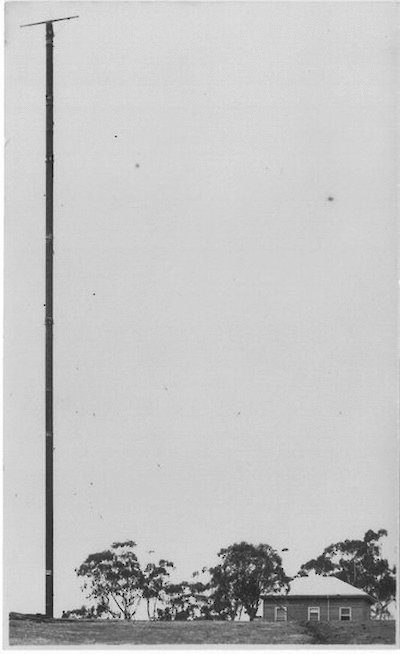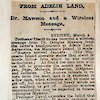Cape Denison comes on air
Daily weather reports for Macquarie Island were broadcast from the wireless station to Melbourne. By May 1912 the Hobart wireless station was in working order, ‘which greatly facilitated wireless business,’ Sawyer wrote. From 12 May 1912 onwards, on a request from the New Zealand government meteorologist, Sandell and Sawyer also sent a daily weather report to Wellington.
When Aurora, on its winter sub-Antarctic cruise, returned to the island on 7 June, Davis noted that the radio station was ‘working well’. Sawyer and Sandell reported that they had heard no signal from Cape Denison. Davis later wrote that ‘they believed, on what grounds I do not know, that Mawson’s party were receiving their signals. This assumption subsequently proved to be incorrect.’
The first contact came on 25 September 1912. Sawyer finally heard some very faint Morse code signals, but all he could discern was: ‘Please inform Pennant Hills … ’. For hours he tried without success to acknowledge receiving the call.
He and Sandell kept at it for four nights, staying on call until daylight, until finally Sawyer heard the tapping of another message from Cape Denison. He wrote in his diary: ‘All we got was “Having a hell of a time waiting for calm weather to put up more masts.”’ Again he responded to Cape Denison’s repeated message, but with no success.
For four more months — during which the Macquarie party enjoyed regular communications with Australia and New Zealand (including the news that Piastre had won the 1912 Melbourne Cup) — Sawyer and Sandell kept up the radio vigil in a vain effort to establish two-way contact with Antarctica. Then early in February 1913 came a breakthrough.
On 3 February they heard a message from Cape Denison, but as usual the Antarctic station was unable to receive them. The next evening, 4 February, they received the crucial news that Douglas Mawson and two fellow-sledgers had not yet returned from an overland trip.



